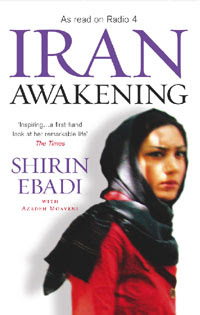 Remember how at this time of the year people often say to you, “What do you really want for Christmas? You never give us any hints!” This new book containing the unpublished stories and clippings of Spike Milligan might just well be your answer. Give them a wink and send them this link. (That’s starting to rhyme like the poems you will find in this Milligan cornucopia).
Remember how at this time of the year people often say to you, “What do you really want for Christmas? You never give us any hints!” This new book containing the unpublished stories and clippings of Spike Milligan might just well be your answer. Give them a wink and send them this link. (That’s starting to rhyme like the poems you will find in this Milligan cornucopia).The Unpublished Spike Milligan is hardly a conventional book, which is one of the reasons why it is subtitled, ‘Box 18’—the box for Spike’s scribbles and seeds, many of which, in the fullness of time became the stuff of vintage Spike.
Norma Farnes, Spike’s manager, biographer, life long friend and the one who he said had “the Power of Attorney over everything in my life except the Execution Squad”, is well placed to offer this smorgasbord of things Spike and provide illustrations of the off stage habits of the great man. For instance, Farnes explains that while Milligan’s public persona was that of the manic, disorganized bloke, in his office (what he called his ‘womb’), he was focused, methodical and a meticulous filer of clippings and stories—hence the subtitle, ‘Box 18’.
Many of the draft stories and soliloquies are provided in Spike’s handwriting with a typewritten translation to offer sense out of the squiggles and doodling. Copies of Spike’s handwritten diary give some interesting insights into the moods of the man. Journal entries such as ‘I’m so lonely’ or ‘F*ck the system’ reveal Spike’s innermost feelings. Spike had written on the page for the 28 September 1980 that one of his tasks was to ‘Die’. The editor adds the caption below, ‘He didn’t’.
The unpublished scripts are about sperm donors, religion, elephant substitutes, ‘Ostralians’, cat coffins and Egyptian mummies.
‘Box 18’ contains some unpublished poems, photographs (from the Goons or Spike blowing his bugle), children’s stories (including some about Bad Jelly the Witch), letters which illustrate his environmental concerns and simply some scattered statements. In one fragment, penned in 1980, Spike says, “My mind is overflowing but it’s nowhere to go.” (p140) At another time he writes, “Waiting—we are all waiting, waiting, for the waiting to stop.” (p143)
While you go adding this book to your ‘All I Want for Christmas’ list, don’t expect that you will find in ‘Box 18’ a laugh a minute. Sensational speeches heard live so often appear dead when they are laid out in type on papyrus. Spike’s speeches and sayings are no exception. But if you can hear the lilt in his voice, if you know the deft timing, if you can see the smile creep over his face, then this Milligan Miscellany will rekindle your memories and transport you back to the stage and the wireless.
Spike concluded most of his jottings, whether to Prince Charles, George Harrison or Michael Parkinson, with this hopeful benediction, ‘Love, Light and Peace’.
The Unpublished Spike Milligan: Box 18 ed. Norma Farnes (London: Fourth Estate, 2007).
This book is available from Magrudy’s Bookshops in the UAE at a cost of Dh 91.00.
Dr Geoff Pound
Image: Front cover of The Unpublished Spike Milligan.









